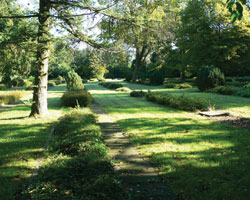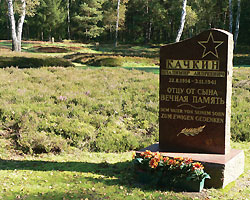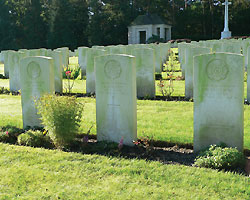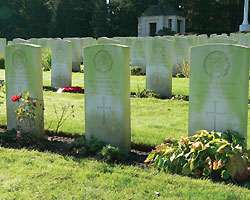|
PICTORIAL MEMORIES OF CAMPBELL BARRACKS
BERGEN-HOHNE - SEPTEMBER 2015
by Lieutenant Colonel J J Cargill OBE
formerly Scots Guards
|
Here is a selection of photographs as a nostalgic reminder of Campbell Barracks, Bergen-Hohne and its environs for all those who served here over the years.
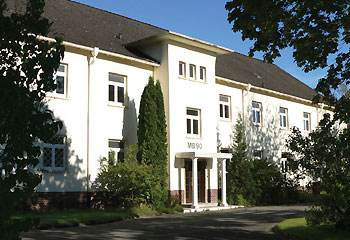
The Officers’ Mess |
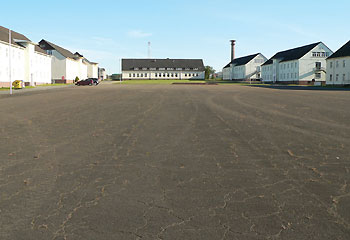
The Battalion area of Campbell Barracks remains virtually unchanged |
To those operating in the mechanised and later armoured infantry role in the 1980s, it often seemed that our NATO Cold War role would go on forever. The Warrior armoured infantry fighting vehicles all left Hohne years ago, redistributed to other armoured infantry battalions within Germany and the United Kingdom. Now every other military vehicle has gone too, even the few venerable FV 432s still soldiering on and the various ‘gate guardian’ tanks. The soldiers and their families all departed in summer 2015 and Hohne camp lies virtually deserted and eerily quiet. In comparison with the tightly-scheduled programmes of the Cold War era, very little heavy armour and artillery training now takes place on the adjacent NATO ranges, but still the occasional artillery and tank fire breaks the uncanny stillness.
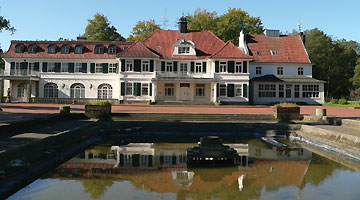
Schloss Bredebeck, the resident cavalry regiment’s Officers’ Mess. Now handed back to the German federal authorities, and lying within the boundary of the NATO training area, the schloss has a very uncertain future with no real likelihood of purchase or lease. The brigade commander’s residence at Hopp Haus is in a similar situation |
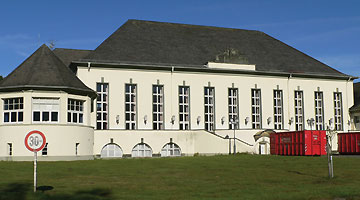
The Roundhouse. Many will remembered how the NAAFI was squeezed bit by bit into all the available rooms in what was originally the Wehrmacht Officers’ Mess. Even after a new separate NAAFI was built, the Roundhouse remained fully occupied until the summer of 2015, the magnificent panelled ballroom still unchanged from the late 1930s |
By the spring of 2016, all parts of the British camp and all the quarters will have been returned to the German authorities. Some 900 flats and houses in Bergen town lie empty, facing an uncertain future in a Germany struggling at times to deal with the current huge influx of migrants. The closure of the British camp has had a major impact upon the whole town, not just in the renting of so many quarters but also upon business for the supermarkets, hotels, restaurants and bars and upon employment for so many civilian staff. Throughout the town there is great apprehension about the future.
Hohne camp is not entirely empty. The NATO Kommandantur remains to control the allocation and use of the NATO ranges. A German Panzer battalion has already started to occupy part of Caen Barracks, to include a Dutch tank company, coming full circle to the former presence of 41 NL Tank Battalion, whose Officers’ Mess lay at the far end of the Battalion square in the 1980s.
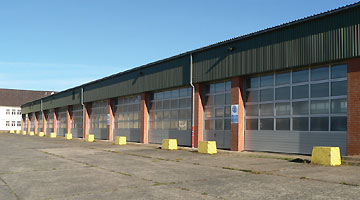
The Warrior garages. Many Guardsmen will recall long hours here in all weather, carrying out maintenance tasks on the Warrior, a step-change from the FV 432s |
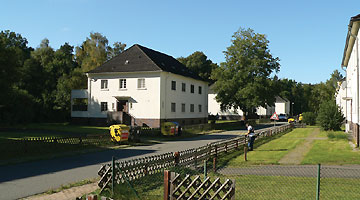
Hoppenstedter Strasse (Hopp Street) provided much of the officer housing in a mix of houses and flats |
There are photographs here of some of the cemeteries in the Bergen-Hohne area, including the Commonwealth War Graves Cemetery between Bergen and Soltau where many members of the Household Division are buried. In many ways these cemeteries encapsulate much of the history of Western Europe in the latter half of the 20th century and the reason why British Forces spent 70 years stationed in Bergen-Hohne.
|
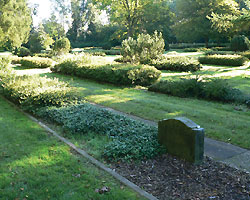 |
|
The Jewish cemetery, close to the stables and the sports fields, contains the mass graves of up to 5000 who died in the weeks after liberation as a result of disease, malnutrition and ill-treatment |
The Russian prisoner of war cemetery on the edge of the NATO ranges. With the end of the Cold War it is now more frequently visited, with an active programme of commemoration by many German schools. Although the Russian figure of 50,000 is questioned, without doubt tens of thousands who perished by malnourishment and
ill-treatment lie here |
|
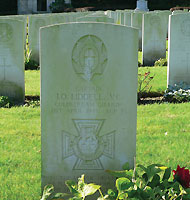 |
|
Over 120 members of the Household Division are buried here in the Commonwealth War Graves Cemetery at Becklingen.
Most of them died in the last few weeks of the war, and many of those who served here since the war will recall the
Remembrance services held in the cemetery on cold November days |
If any readers of The Guards Magazine have memories or photographs of their time serving in Germany, please send them to:
The Editor, The Guards Magazine
Horse Guards
London
SW1A 2AX |
|







